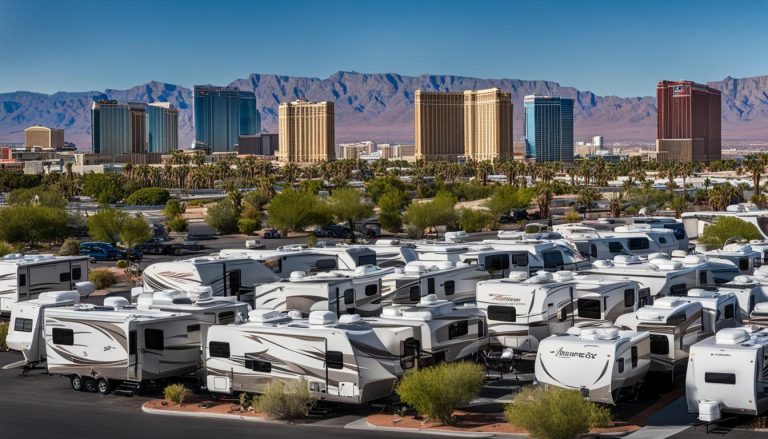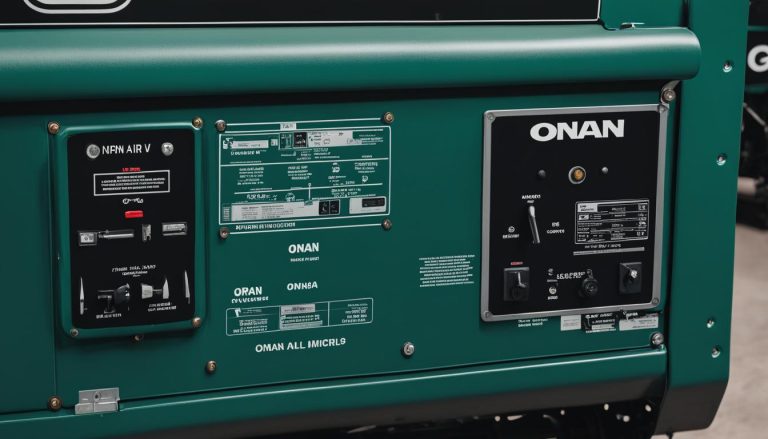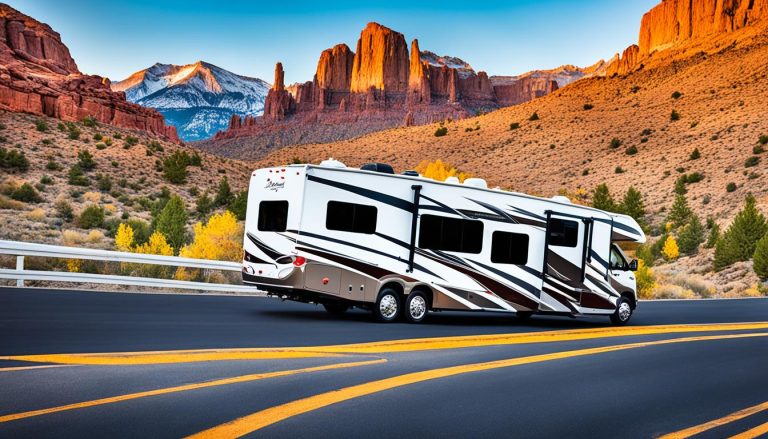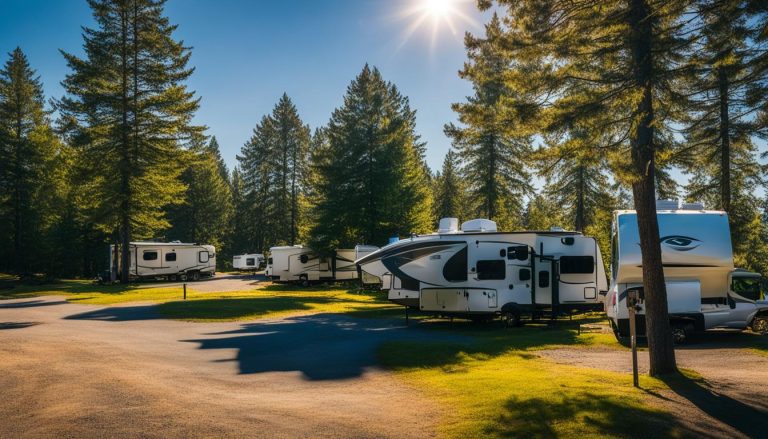RV Airflow: Enhance Your Travel Comfort & Efficiency
gorvlifestyle.com and its partners may earn a commission if you purchase a product through one of our links
Are you looking to improve your RV’s airflow and maximize your travel comfort? Understanding RV airflow and optimizing it can make a significant difference in the performance of your air-conditioning unit and the overall efficiency of your RV. With the RV Airflow system, you can enjoy a more comfortable and energy-efficient journey.
Key Takeaways:
- RV Airflow is a module designed to capture and direct the discharged air from your RV’s air-conditioning unit into the existing ductwork.
- It reduces air friction and turbulence, allowing optimal operation of your air-conditioner and enhancing your travel comfort.
- The RV Airflow system is non-electrical, non-mechanical, and made from durable, temperature, and water-resistant materials.
- Optimizing RV airflow can extend the lifespan of A/C components, reduce energy consumption, and eliminate hot and cold spots in your RV.
- Installing RV Airflow is a straightforward process with detailed instructions provided for your RV’s specific A/C unit.
How Does RV Airflow Work?
The RV Airflow system is a revolutionary solution designed to optimize the airflow in your RV. By understanding how the RV Airflow system works, you can enhance your travel comfort and increase the efficiency of your RV.
Installed in the plenum, which is the space between the bottom of your air-conditioning unit and the cover plate, the RV Airflow system captures the discharged air from the unit and directs it smoothly into your existing ductwork. This innovative system eliminates air friction and turbulence, allowing your air-conditioner to operate at its optimal capacity.
The non-electrical and non-mechanical design of the RV Airflow system makes it a simple yet effective solution for optimizing your RV’s airflow. With the RV Airflow system in place, you can experience improved airflow throughout your RV, ensuring a comfortable and consistent temperature throughout.
Optimizing your RV’s airflow not only enhances your travel comfort but also extends the life of your air-conditioning components and reduces energy consumption. By reducing air friction and turbulence, the RV Airflow system reduces the load on your compressor and other electrical components, resulting in lower energy usage.
Take a look at the diagram below to visualize how the RV Airflow system works:
As depicted in the diagram, the RV Airflow system captures the discharged air and directs it smoothly into your existing ductwork. This ensures optimal airflow and efficient cooling or heating throughout your RV.
With the RV Airflow system in place, you can enjoy a more comfortable and efficient RV travel experience. Say goodbye to hot and cold spots and hello to consistent temperature control.
Importance of RV Airflow
Optimizing the airflow in your RV is crucial for ensuring your comfort and maximizing the efficiency of your air-conditioning system. By paying attention to and addressing any issues related to RV airflow, you can enhance the performance of your A/C unit, extend its lifespan, and reduce energy consumption.
When your RV’s airflow is optimized, it allows the air-conditioning unit to operate at its full capacity, resulting in more efficient cooling or heating throughout your vehicle. This means that you can enjoy a comfortable and consistent temperature, eliminating any hot or cold spots that may be present.
One of the main benefits of optimizing RV airflow is the reduction of air friction and turbulence. These factors can cause a strain on the compressor and other electrical components, increasing energy consumption and potentially leading to premature wear and tear. By minimizing air friction and turbulence, you can reduce the load on these parts, resulting in lower energy usage and a longer lifespan for your A/C unit.
If you are experiencing any issues with your RV’s air-conditioning system, such as reduced airflow or inefficient cooling, optimizing the airflow should be one of the troubleshooting steps to consider. By addressing airflow issues, you may be able to resolve these problems and avoid costly repairs or replacements.
To help you understand the importance of optimizing RV airflow and troubleshooting any related issues, here is a practical table summarizing the key points:
| RV Airflow Optimization | Benefits | Troubleshooting |
|---|---|---|
| Improve A/C performance | – More efficient cooling or heating – Consistent temperature throughout the RV |
Address reduced airflow or inefficient cooling |
| Extend A/C lifespan | – Minimize strain on compressor and electrical components | Resolve airflow issues to avoid costly repairs |
| Reduce energy consumption | – Lower electricity usage – Cost savings in the long run |
– Troubleshoot air friction or turbulence – Check for obstructions in the ductwork |
Remember, optimizing your RV airflow is an important step in maintaining a comfortable and efficient travel experience. By paying attention to this aspect and addressing any airflow issues promptly, you can ensure that your air-conditioning system operates at its best, providing you with the comfort you desire on your journeys.
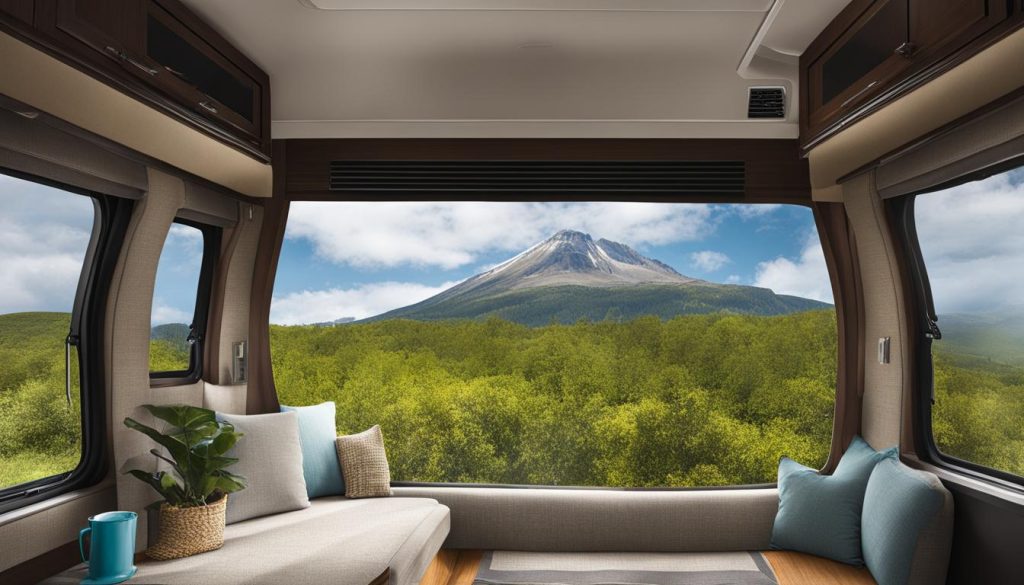
Installing RV Airflow
Installing the RV Airflow system is a straightforward process that can be easily accomplished by following the provided instructions. The system comes with detailed step-by-step guidelines tailored specifically to your RV’s air-conditioning unit.
To begin the installation process, you will need to gather the necessary tools and equipment. Make sure you have a screwdriver, a pair of pliers, and any other tools mentioned in the instruction manual.
Follow these simple steps to install the RV Airflow system:
- Start by removing the A/C filters, covers, mounting plate, and separator. These components may vary depending on the make and model of your RV’s air-conditioning unit.
- Next, locate the plenum, which is the space between the bottom of your air-conditioning unit and the cover plate. This is where the RV Airflow module will be installed.
- Insert the RV Airflow module into the plenum, ensuring a secure fit. You may need to use the provided screws or fasteners to properly secure the module in place.
- Once the RV Airflow module is installed, replace the mounting plate and secure it tightly using the screws or fasteners.
The entire installation process typically takes around 30 minutes to complete, depending on your familiarity with the RV’s air-conditioning system. Following the instructions carefully is crucial to ensure the proper installation and optimal performance of the RV Airflow system.
Once the installation is complete, you can enjoy the benefits of improved airflow and enhanced travel comfort in your RV.
Take a look at the image below to get a visual representation of the RV Airflow system installation process:
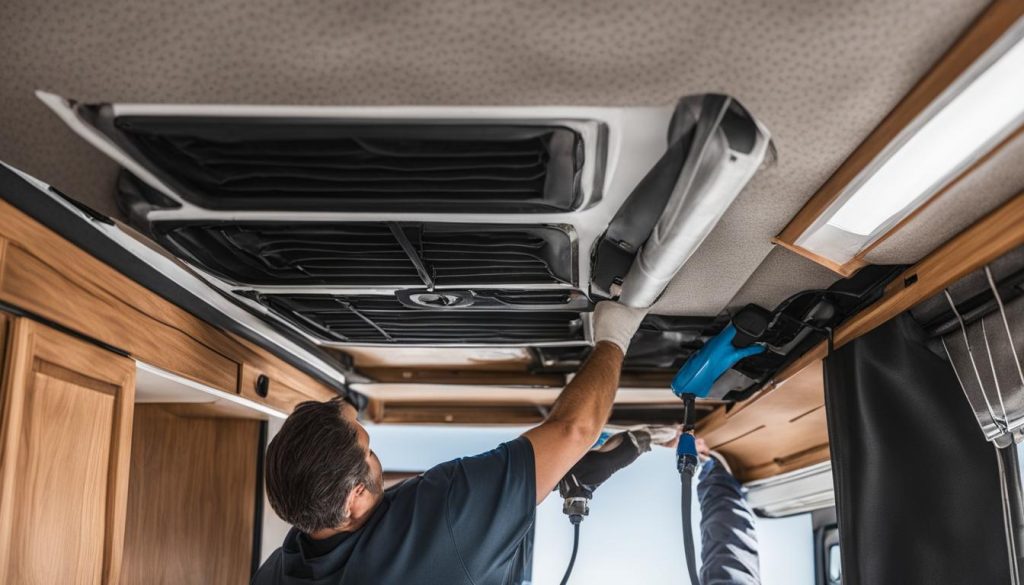
With the RV Airflow system properly installed, you can experience the full potential of your RV’s air-conditioning unit, ensuring efficient cooling and heating throughout your travels.
Benefits of RV Airflow
Investing in an RV Airflow system can provide you with a range of benefits that enhance both your comfort and the efficiency of your RV. Here are some advantages of implementing the RV Airflow system:
- Improved Airflow: The RV Airflow system optimizes the airflow throughout your RV, ensuring that cool or warm air reaches every corner. This results in more efficient cooling and heating, creating a comfortable environment regardless of the outside temperature.
- Extended Lifespan of A/C Components: By reducing air friction and turbulence, the RV Airflow system helps minimize strain on your air-conditioning unit’s components. This can result in a longer lifespan for your A/C system, reducing the need for frequent repairs or replacements.
- Reduced Energy Consumption: The RV Airflow system’s ability to enhance airflow and reduce air resistance translates into lower energy consumption. With the system optimizing the efficiency of your A/C unit, you can enjoy a comfortable RV experience while saving on energy costs.
- Consistent Temperature Distribution: Hot and cold spots can be a common issue in RVs, making it challenging to maintain a comfortable temperature throughout the vehicle. The RV Airflow system eliminates these fluctuations, ensuring a consistent temperature in every area of your RV.
- Noise Reduction: The RV Airflow system not only improves the airflow but also helps minimize the noise generated by the air-conditioning unit. This creates a more peaceful and enjoyable environment inside your RV, allowing you to relax and rest without unnecessary distractions.
“The RV Airflow system provides enhanced comfort and energy efficiency for your RV, creating a more enjoyable travel experience.”
– RV Enthusiast
| Benefits of RV Airflow | |
|---|---|
| Improved Airflow | ✓ |
| Extended Lifespan of A/C Components | ✓ |
| Reduced Energy Consumption | ✓ |
| Consistent Temperature Distribution | ✓ |
| Noise Reduction | ✓ |
By harnessing the benefits of the RV Airflow system, you can create a more comfortable and efficient RV living space, allowing you to focus on enjoying your travels to the fullest.
Maximizing RV Airflow Efficiency
To maximize the efficiency of your RV Airflow system, it is crucial to prioritize regular maintenance of your air-conditioning unit. Keeping the filters clean or replacing them when necessary is a key step in optimizing RV airflow performance. Clogged filters can restrict airflow and decrease the effectiveness of your air-conditioner. By ensuring clean filters, you can maximize the airflow efficiency and improve the overall cooling and heating experience in your RV.
Checking for any obstructions or blockages in the ductwork is equally important. Over time, debris, dust, or even pests can accumulate and hinder the smooth flow of air. By inspecting and clearing any obstructions in the ductwork, you can enhance the RV airflow and ensure that each corner of your vehicle receives the desired temperature. This simple maintenance task can significantly contribute to the efficiency and performance of your RV Airflow system.
In addition to regular maintenance, proper insulation and sealing of your RV is paramount. Air leaks can compromise the effectiveness of your air-conditioning system by allowing cool air to escape or hot air to enter the vehicle. By keeping your RV properly insulated and sealed, you can prevent these air leaks and optimize the flow of air throughout your RV. This enhances the efficiency of your RV Airflow system, ensuring maximum performance.
Another valuable step is monitoring the airflow and temperature inside your RV. Regularly checking the airflow from your vents and keeping track of the temperature can help identify any issues or inefficiencies that may require attention. By promptly addressing and resolving any problems, you can maintain the optimal performance and efficiency of your RV Airflow system, providing a comfortable and satisfying travel experience.
FAQ
What is RV airflow?
RV airflow is a specially designed system that optimizes the airflow in your RV’s air-conditioning unit, improving cooling efficiency and travel comfort.
How does RV airflow work?
The RV airflow system captures the discharged air from your RV’s air-conditioning unit and directs it smoothly into your existing ductwork, reducing air friction and turbulence for optimal airflow.
Why is RV airflow important?
RV airflow is important for enhancing travel comfort, maximizing the performance of your air-conditioning unit, reducing energy consumption, and maintaining a consistent temperature throughout your RV.
How do I install RV airflow?
To install RV airflow, you need to follow the provided instructions specific to your RV’s air-conditioning unit. The installation process usually takes around 30 minutes and involves replacing the A/C filters, covers, mounting plate, and separator with the RV airflow module.
What are the benefits of RV airflow?
RV airflow offers several benefits, including improved cooling and heating efficiency, extended lifespan of A/C components, reduced energy consumption, elimination of hot and cold spots, and reduced noise from the air-conditioning unit.
How can I maximize RV airflow efficiency?
To maximize RV airflow efficiency, it is important to regularly maintain your air-conditioning unit by cleaning or replacing filters, checking for obstructions in the ductwork, ensuring proper insulation and sealing, and monitoring the airflow and temperature inside your RV.


